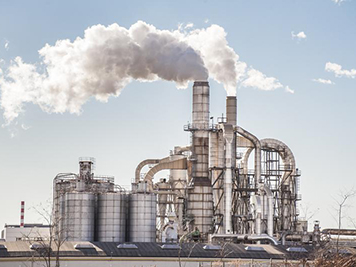The construction industry in the United States has grown an average of 3.2% annually between 2017 and 2022, with nearly $2.1 trillion worth of structures built each year. The advancement of commercial buildings and infrastructure is completely dependent on construction companies, but what happens when there aren’t enough workers to meet demand?
That’s exactly what the U.S. is experiencing right now, with the sector facing an extreme labor shortage. The current level of employment puts many construction employers in a difficult position, causing them to pause vital projects and challenging their bottom line and business goals.
Let’s look at the current construction job market to uncover what’s causing this massive decline in employment and learn what can be done to fix it.
A look at the job market
The construction industry is about 650,000 workers short of what it actually needs to accomplish tasks in a timely manner, according to CNBC. This slows the completion of projects down in all areas, from residential to infrastructure to hospitals.
To meet the demand for labor, the Associated Builders and Contractors trade group estimates that 546,000 additional workers on top of the normal pace of hiring will need to be onboarded.
While the average construction worker gets paid fair wages, depending on the company, the price of goods has risen due to inflation and other economic factors, causing organizations to take on more expenses than before. This has slimmed margins and made employment decisions arduous.
Factors influencing the construction shortage
Project delays, rising labor costs, and frustrated clients are now constant components that industry professionals must face. But what are the sources of labor shortages causing these exasperating outcomes? Here are just a few of the root problems impacting the labor market:
Risks
Construction professionals are subject to many risks like environmental elements—excessive noise and airborne contaminants—which can cause long-term hearing loss and breathing problems. Additionally, the construction industry can greatly affect mental and emotional well-being. In fact, BC Building Trades found that 83% of construction workers have experienced a mental health issue at some point throughout their careers. This could be due to long and hard-working hours, financial struggles, or less time to socialize with friends and family outside of work.
On top of environmental discomforts and well-being struggles, physical risks are also present. Job site conditions aren’t always safe, with landscapes that can cause slips, trips, falls, burns, electrical incidents, and material handling injuries. According to the U.S. Bureau of Labor Statistics, workers in construction and extraction positions experienced 21,400 nonfatal workplace injuries and illnesses due to falls, slips, and trips in 2020—the last time this study was completed. Without the right workers’ compensation packages in place, employers struggle with team member attraction and retention.
Pandemic
The COVID-19 pandemic halted many construction projects, and progress has been slow to pick back up. During the height of the coronavirus, contractors and employers had to try and meet business targets and complete existing projects while simultaneously protecting their staff, staying compliant, and managing logistics and customer expectations. Unfortunately, this puts a strain on resources, which have slightly improved, but not to the extent that’s necessary to be back at pre-pandemic levels.
COVID-19 also introduced several supply chain issues that make it difficult for organizations to get the right supplies they need in a timely manner for a price that won’t break the bank. During the first few months of the outbreak, many industry professionals were unable to access basic materials like cement, bricks, and wood. While resources are more readily available today, there are still lasting impacts from that time period that have resulted in interruptions and bottlenecks in the supply chain.
Federal funding
Two years ago, President Joe Biden signed the Bipartisan Infrastructure Law, which is the largest long-term infrastructure and economic investment in U.S. history. From 2022 to 2026, the bill provides about $550 billion to new federal investment projects, like:
- Bridges
- Broadband
- Mass transit
- Roads
- Water infrastructure
While the billion-dollar infrastructure rebuilding initiatives passed by the Biden-Harris administration help provide much-needed funding to many big projects, there’s now a burden to find the right amount of workers to get these projects done in an already tight industry. Several projects have broken ground, including the rebuilding of roads and bridges, clean water initiatives, and energy-efficient targets. The problem is that these large-scale ventures can’t be finished—or started, in some cases—if the gaps in labor can’t be fixed.
Training
Over the years, proper training has been hard to find, especially in schools. While there are some classes for students to take during high school, many educators steer people toward four-year degrees rather than teaching critical and beneficial skills that can produce more construction employees upon graduation. Proper training for adults looking to go into construction is also hard to find, with many programs being expensive or out of reach.
The current group of students and young workers who could enter the construction sector has been told everything that lies ahead is digital, promoting less technical and hands-on careers to them. While many jobs are now being done with technology, talented and knowledgeable construction professionals are also a pivotal part of a healthy and flourishing future. Without a push for less expensive and more accessible educational opportunities, the art of building and manufacturing could be lost.
Aging workforce
The median age of construction and extraction workers is 41, according to the Bureau of Labor Statistics. As more skilled construction labor leaves, not enough younger workers are entering the workforce. The Associated Builders and Contractors found that nearly one out of four construction workers is over the age of 55, meaning they’ll soon retire with no one to take their spots.
The Associated Builders and Contractors invested $1.6 billion in 2021 to help educate a group of young workers on how to build a construction workforce that’s safe, skilled, and productive—but even with independent organizations putting together educational opportunities for apprentices, students, and adults, there’s still a large need for further industry training.
Tips for navigating the skilled labor shortage
With the next generation of construction looking uncertain and multiple risks making job retention difficult, it’s crucial that companies find solutions that can be implemented into their hiring and employee retention strategies. Take the following steps to steer your construction company toward improved hiring and management practices:
Work with a staffing partner
Staffing agencies have access to wide networks of skilled workers and can help construction companies bridge the staffing gap in a shorter amount of time. This type of recruitment can cast a wider net, potentially reaching candidates with your job openings that you would not have otherwise thought of or had access to.
Working with a staffing partner can also take some of the burden of construction employment management, including locating, interviewing, and onboarding skilled labor.
Support workers with mental health resources
A company’s benefits offering can make or break employee attraction and retention. As you put together your benefits offerings, don’t overlook the importance of employee well-being. While many physical risks pose a threat to this industry, psychosocial hazards are often forgotten about, leaving workers floundering for help with nowhere to turn. High demands, low control over work tasks, a lack of support from supervisors and coworkers, and job frustrations are all leading causes of mental health issues for people in construction, based on research done by the Centers for Disease Control and Prevention.
Better support your staff with mental health resources and assistance that can make a real difference. Some best practices to implement include:
- Offering and de-stigmatizing mental health support
- Educating and training workers about well-being with financial literacy programs and workshops
- Driving social engagement and team-building exercises within workforces to foster a more inclusive, supportive environment
- Promoting wellness-focused physical health
Look into construction insurance
Ensure your construction company has the best benefits like workers’ compensation and employee well-being programs. Get competitive construction coverage through Marsh McLennan Agency, and better attract and retain skilled talent who can help your business remain consistent and competitive in the marketplace.
Partner with Marsh McLennan Agency
On top of workers’ compensation and employee well-being programs, Marsh McLennan Agency delivers other tailored services for construction companies to help with the skilled labor shortage:
- Benchmarking and data analytics
- Captive solutions
- Claims advocacy and management
- Controlled insurance programs
- Environmental consulting and risk transfer
- Health management solutions
- Risk reduction techniques and training
- Surety bonding
If you’re a skilled trade employer and in need of solutions for the widespread workforce shortage plaguing your industry, don’t hesitate to contact our team at Marsh McLennan Agency to learn more about how we can help you with construction insurance, employee health and benefits, and your risk management needs.



